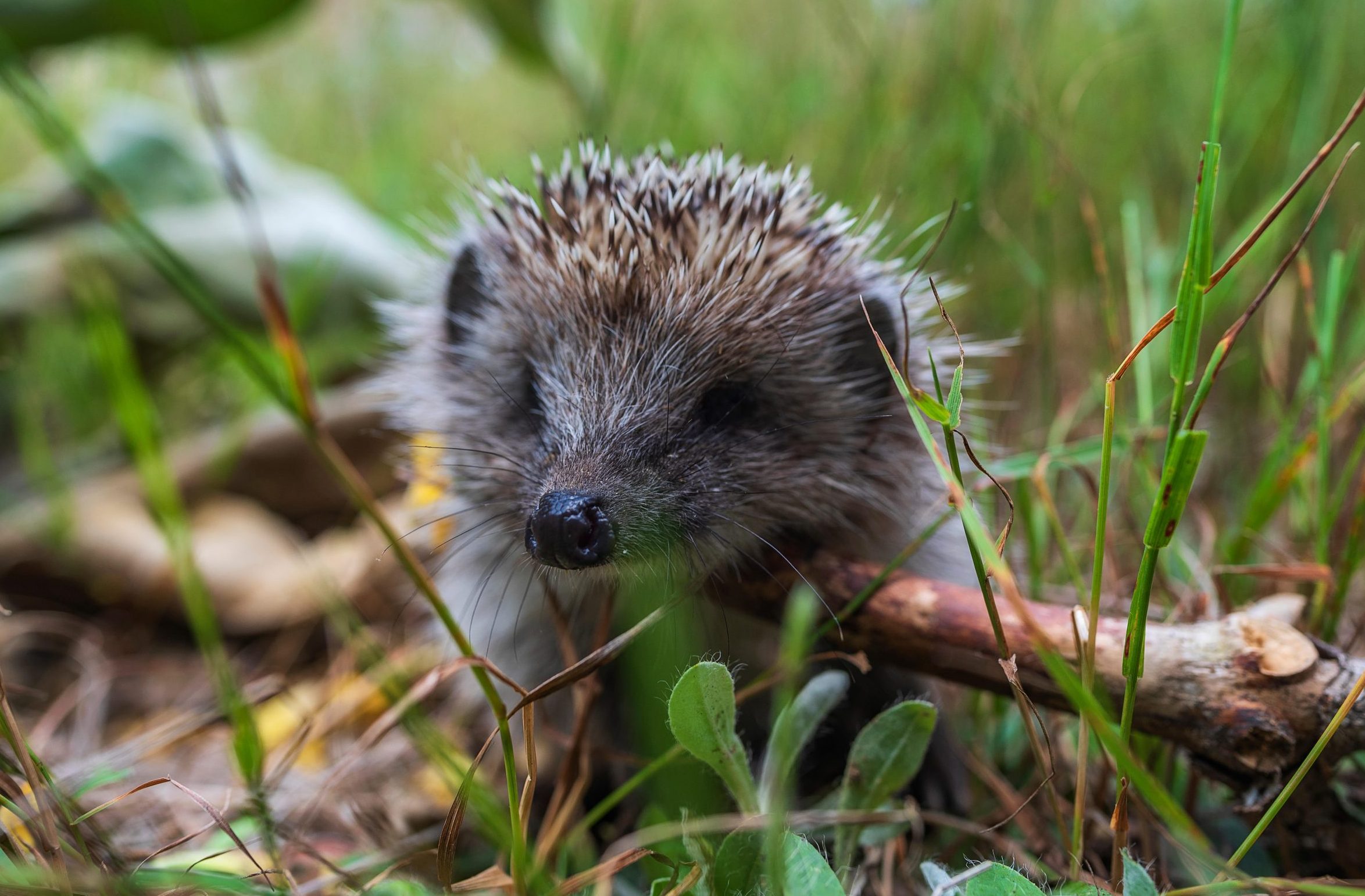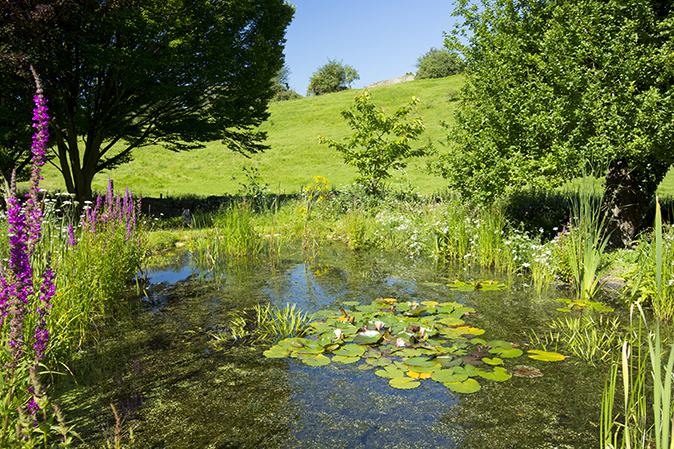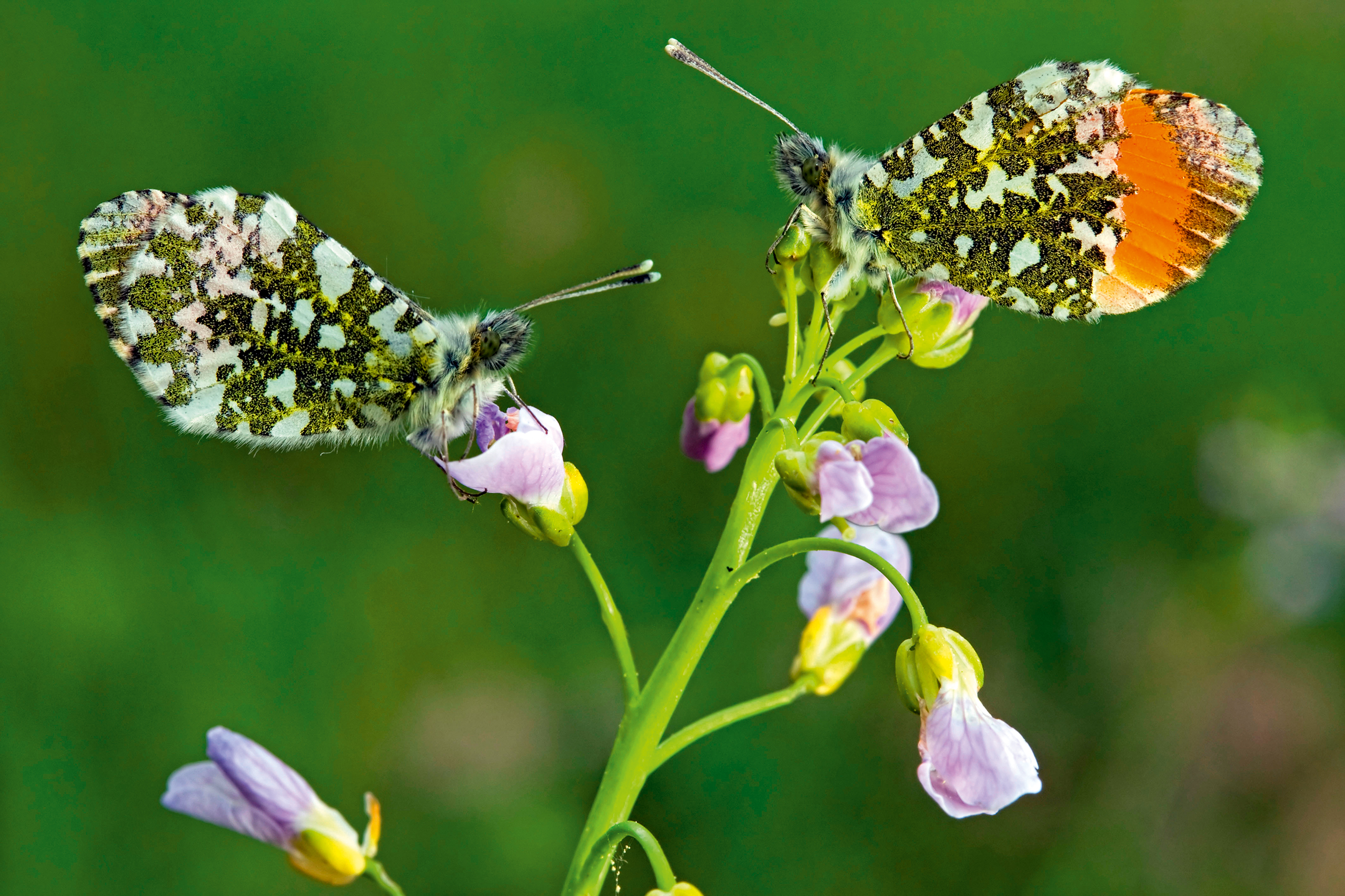How to re-wild your garden, from ponds and trees to attracting butterflies and hedgehogs
Joel Aston — one half of the 'butterfly brothers', along with his sibling Jim — explains how rewilding gardens to attract myriad species, from nectar-feeding insects to newts, birds and hedgehogs.


We all know that, throughout the world, natural habitats are under threat. Indeed, in the UK alone, we’re estimated to have lost 97% of our wildflower meadows and a quarter of a million miles of hedgerow since the Second World War.
Now, perhaps more than ever before, our wildlife is in trouble. Many species, from wildflowers to great crested newts, grasshoppers to house sparrows, are in desperate need of our help (and that’s without even mentioning the climate crisis). However, despite all the doom and gloom, there is hope — and it starts on our own doorsteps.
After spending the past 15 years (if you discount our childhoods making log piles in the back garden) creating habitats for wildlife, we’ve seen a huge shift in national attitudes towards Nature conservation. Back in 2005, when we formed Hazelwood Landscapes, most people had to be persuaded simply to put up a bird box. Nowadays, we receive enquiries from all over the country asking for help for everything, from making a small pond to creating large-scale meadows, wetlands and woodland.
As more and more people want to do their bit to help wildlife — and, logistically, it becomes difficult to advise everyone individually — we decided to write Wild Your Garden, a step-by-step guide to show people how to create their own sanctuary for Nature.
Imagine what would happen if we transformed our outdoor spaces — rural gardens, urban balconies and everything in between — and turned them into spaces for Nature. Here are some tips for getting started — for more information and ideas, visit www.hazelwoodlandscapes.com.
Make a pond
On August 4, 1996, at the ages of 10 and eight, my brother Jim and I crouched next to our first wildlife pond in our own back garden. It’s safe to say that this was a defining moment in our Nature-filled lives and one that has led us to where we are today.
Exquisite houses, the beauty of Nature, and how to get the most from your life, straight to your inbox.
We’re often asked which feature is the most beneficial for attracting wildlife into a garden. The answer is, of course, a pond — there’s no better source of life. A well-planned pool, with shallow margins for birds and mammals to bathe and drink from, rotting logs around the edge for frogs and newts to hunt between and southern hawker dragonflies to lay their eggs on, twinned with margins planted with wildflowers, such as cuckooflower, ragged robin and purple loose-strife, will draw insects in from far and wide.
These mini oases are one of the richest habitats per square yard and ones that no garden should be without. They will lead the way for our gardens to be happier places for wildlife of all kinds.

Get planting
If everyone with the means to do so planted a tree, put up a bird box, dug a pond and let the grass grow long, we’d go some way to reclaiming the wilder, richer, more birdsong-filled gardens of our childhoods. All it would take is for a few people on each street to work together and, before long, we’d have a nationwide network of habitats. By taking positive steps in our own gardens — no matter how small — together, we can really make a difference.
Don’t forget the human touch
It’s very easy to think of a wildlife garden as a mass of brambles and nettles with a few trees and shrubs. This stereotype can put off many gardeners, who would hate to see their beloved patch become an overgrown mess. A true wildlife garden, however, should be one that works for both wildlife and humans alike. It is also true that the best wildlife gardens are a mosaic of habitats, which include (but are not limited to) native trees and shrubs, a mini wildflower meadow, a pond and herbaceous borders brimming with nectar for butterflies, bees and other insects.
Make the most of your vertical spaces
Once established, climbers such as hop, ivy, clematis, winter-flowering jasmine and honeysuckle can provide vital cover for an entire colony of our declining house sparrows, as well as nesting habitat for robins, song thrushes and blackbirds.
Keep hedgehogs happy
If you own one or more of your boundary fences, cut a hole (5in by 5in) at the bottom to allow hedgehogs in and out of your garden. They can travel a mile or so each night, so they need access to plenty of gardens to feed.

Bringing in different types of butterflies
Brimstone (usually seen from March to May and again from July to August) One of the first butterflies on the wing in March, the brimstone is an unmissable flash of sulphur yellow in spring. It can be attracted by planting common or alder buckthorn for the females to lay their eggs on. This butterfly also enjoys the nectar of many flowers, such as red campion and dandelions.
Orange tip (April to June) A real harbinger of spring and one that is easily brought into gardens by planting garlic mustard or honesty in your borders for the females to lay their eggs on. Both plants are a good source of nectar for these and many other insects. Orange tips also lay their eggs on cuckooflower.
Common blue butterfly (May, July and August to September) A personal favourite and one that can often be attracted to a garden by planting bird’s-foot trefoil in your lawn. This fantastic wildflower is a favourite of many bees, too.
Comma, small tortoiseshell, peacock and red admiral These four are all well known and will lay their eggs on a simple patch of nettles. It sounds crazy, but why not plant a small pot of nettles in a sunny spot on your terrace? You’ll be surprised what turns up.
[collecion]
Country Life is unlike any other magazine: the only glossy weekly on the newsstand and the only magazine that has been guest-edited by His Majesty The King not once, but twice. It is a celebration of modern rural life and all its diverse joys and pleasures — that was first published in Queen Victoria's Diamond Jubilee year. Our eclectic mixture of witty and informative content — from the most up-to-date property news and commentary and a coveted glimpse inside some of the UK's best houses and gardens, to gardening, the arts and interior design, written by experts in their field — still cannot be found in print or online, anywhere else.
